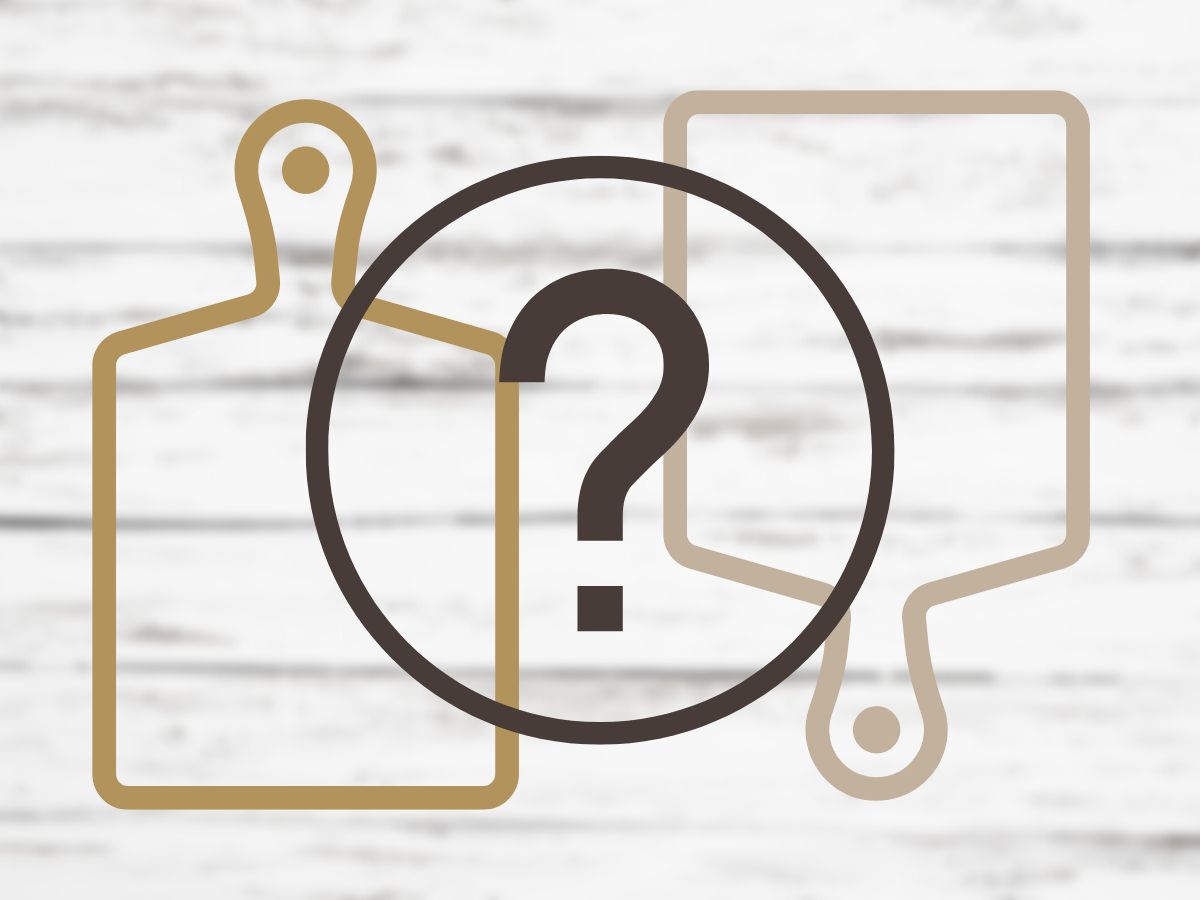Many of you are wondering, can you use pine for cutting boards? Pine wood can also make cutting boards, although it isn’t deemed “excellent” for a few causes. For starters, because it is a very soft wood, it will produce cut marks more rapidly and can dull the blade.
Two, because it is a porous wood, it could harbor bacteria very easily than other woods, necessitating extra cleaning and care. If you use pine for the cutting board, sand it clean and oil it regularly.
Features
Pine is a species of an evergreen tree of the Pinaceae family. There are around 115 kinds of pine trees native to the Northern Hemisphere. Pine is a common pick for rustic-style decor and furnishings. It is also frequently utilized as a less expensive alternative to wood floors.
Pine trees are widely used in building, furniture, and paper manufacturing. Pine wood is a light-colored softwood that ranges from yellow to pale brown. The grain of pine wood is linear or slightly wavy, with a gritty feel.
Widely available
Pine is abundantly available in the United States and the rest of the world. Pine has a long history of use in Europe as a material for making cutting boards. This is due to the vast quantities of pine trees that can be found in that region.
Pine is one of the most commonly used types of wood in buildings, and as a result, it is one of the woods that is produced in the greatest quantity. As a result, pine can be purchased as a form of lumber virtually anywhere globally.
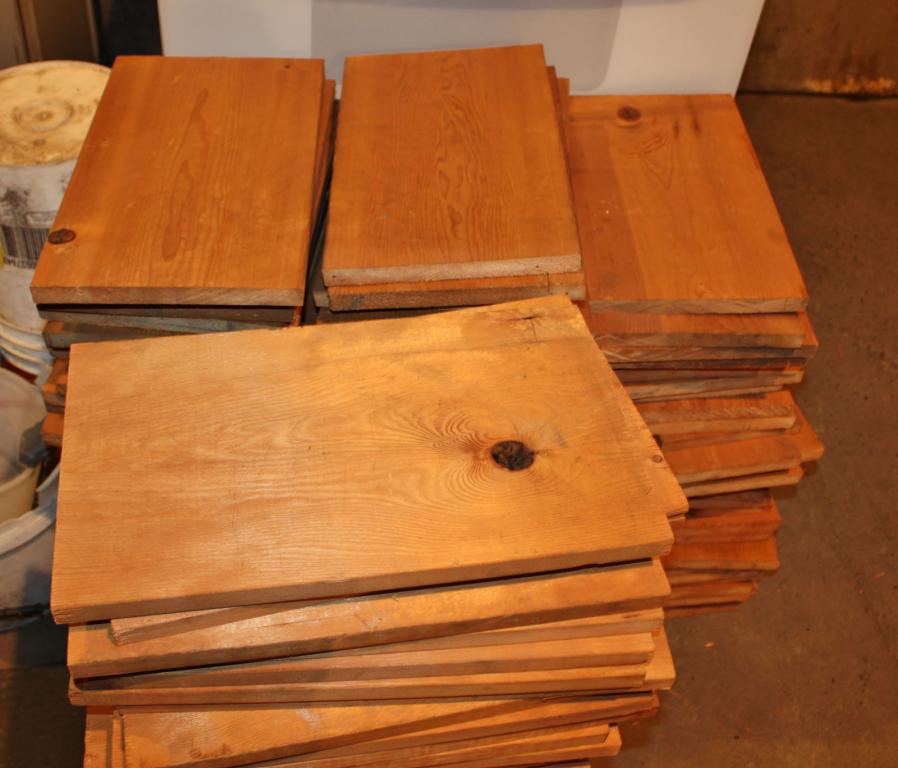
Cheap
In most cases, pine may be acquired at a reasonable cost. Pine is among the woods that can be purchased at one of the lowest prices because it is cut and processed in big quantities on a commercial scale. Because of this, pine is an excellent choice for developing your expertise in carpentry.
You do not need to be terrified of making mistakes that will cost you a lot of money. If you screw up, you can always start with a fresh piece of pine and give it another shot.
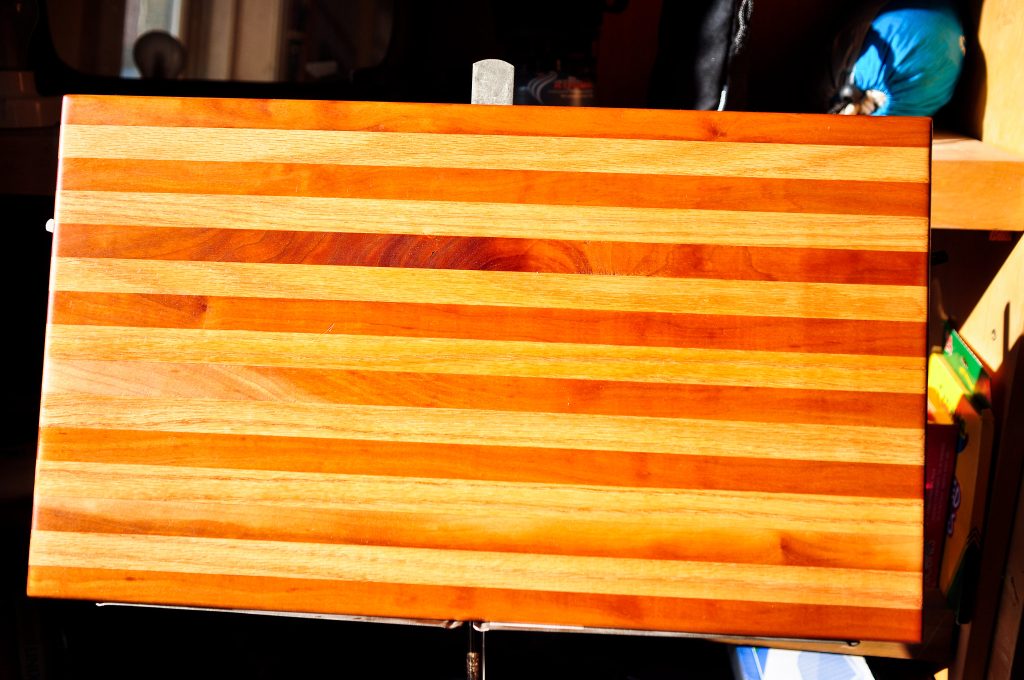
Pre-processed boards
Due to the high volume at which pine is produced, pine boards are now available in virtually every size and configuration, having been pre-cut, pre-planed, and otherwise pre-processed. You should be able to obtain pine boards at any home improvement store that are the right dimensions for the chopping board you are creating.
When beginning their careers as woodworkers, those with little to no experience should consider using pine for their first chopping board. It is generally straightforward and requires minimal hand tools and power instruments.
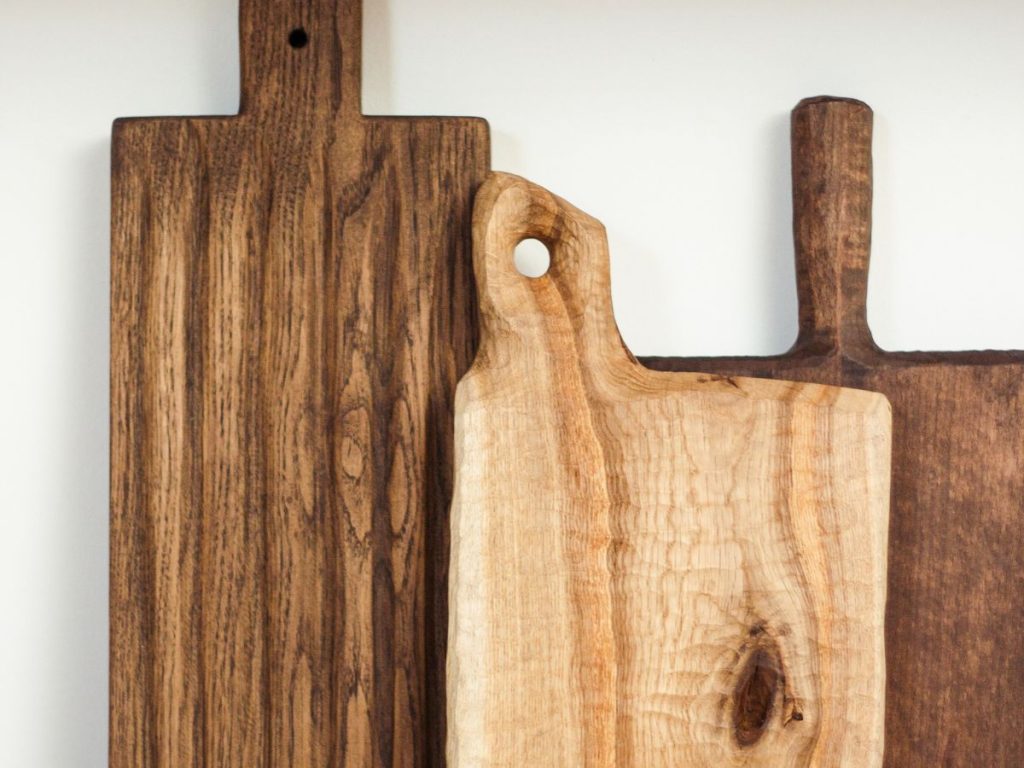
Pros
- Pine wood is inexpensive, making it an excellent choice for individuals on a tight budget
- The grain of pine provides a lovely blend of patterns that may truly bring charm to your kitchen
- Pine wood is present in a range of thicknesses, allowing you to select the best one for your purposes, and it is readily available
- Pinewood has a lovely aroma that can enhance the atmosphere of your kitchen
Cons
- Because pine is a softwood, it will acquire knife marks quicker than hardwood
- Because pine is a porous wood, it absorbs moisture and smells more readily than non-porous materials such as plastic. This means you’ll have to clean as well as disinfect your chopping board more frequently to keep bacteria at bay
- If not properly cared for, pine is prone to warping or cracking over time
- Because of the porous nature of the wood, it is quickly stained by the stuff you are cutting, such as beets
- Oiling is required regularly to protect it from drying outside and cracking
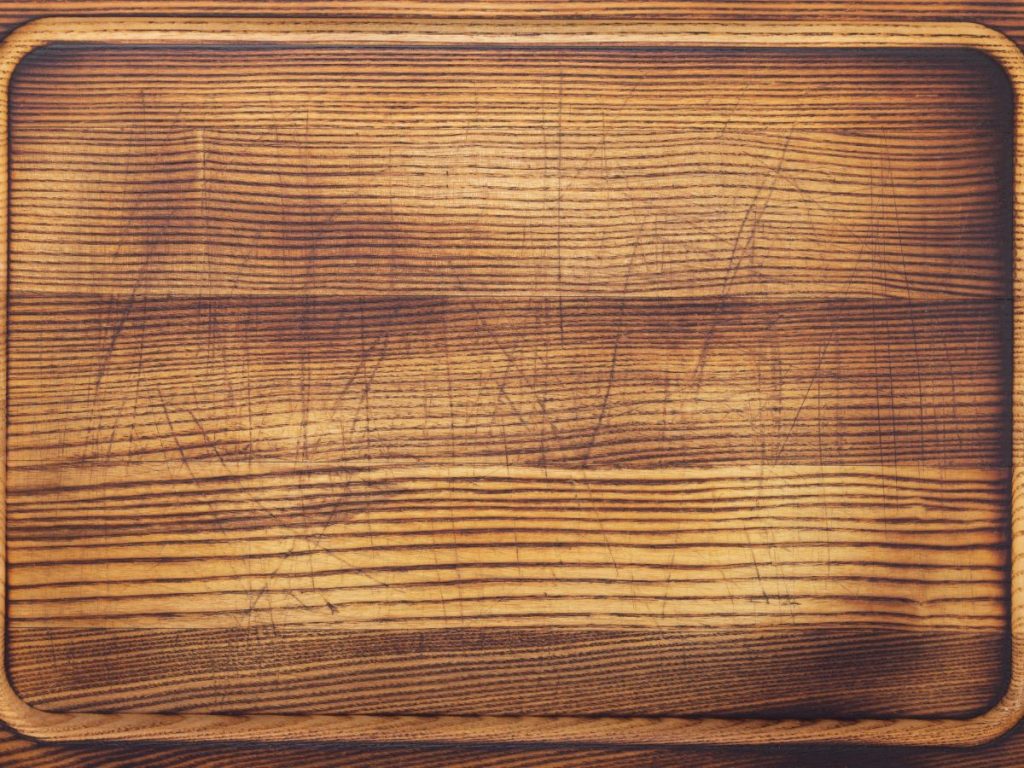
As you can see, there are numerous reasons why pine should not be used for a chopping board. And there are undoubtedly better timbers available that we could utilize. However, this doesn’t rule out the use of pine for cutting boards.
Pine is a fantastic choice if you require an inexpensive chopping board that you can construct to practice your carpentry skills that require minimal processing and can be used to slice dry food.
Making an End Grain Cutting Board with Pine
It is recommended that cutting boards made from pine be constructed using the end grain of the hardwood. This will allow the board’s attributes and performance to be maximized. The explanation for this is that an end-grain chopping board will be more durable and sturdy than a face-grain or edge-grain chopping board throughout its lifetime.
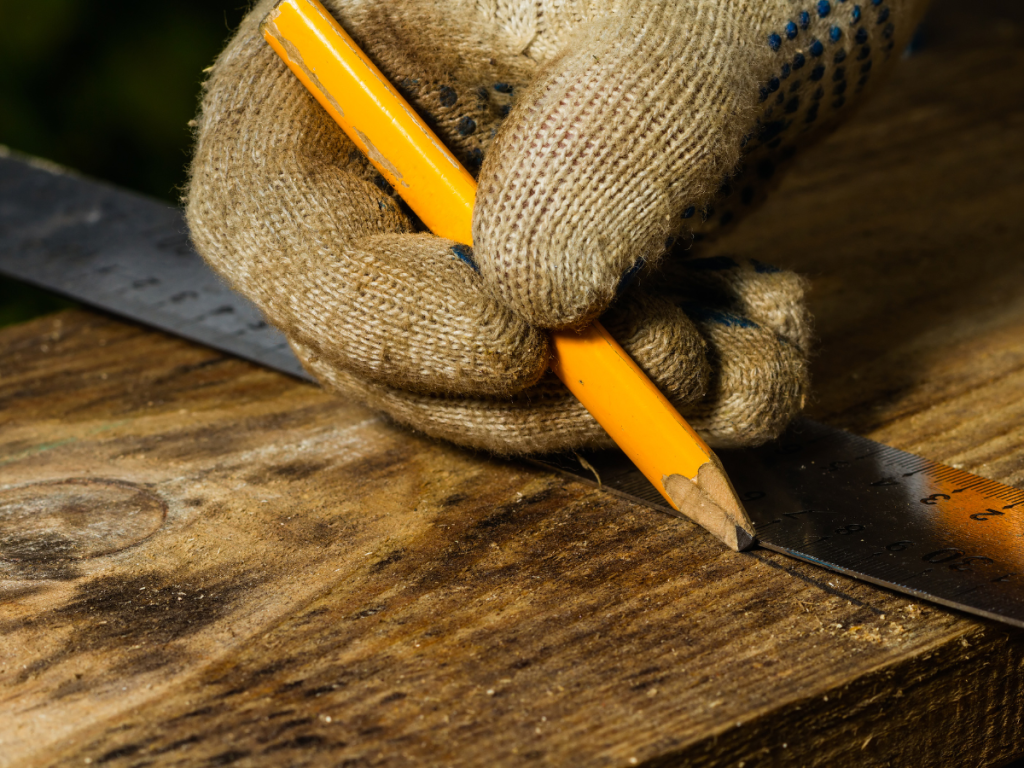
When using cutting boards with edge grain, the grain and wooden fibers are directed toward the knife; as a result, the knife slices through the spaces between the grain and the hardwood fibers.
After being sliced, the fibers won’t be ripped or cut through, and the shape of the wood will return to what it was before it was cut. Because of this, cutting boards made with edge grain are more durable.
When using a cutting board with edge-grain or face-grain, you cut straight through the wood fibers, which causes the fibers to be pulled apart and prevents them from returning to their original form after being cut.
These cuts often leave a hard texture and might give the appearance of deterioration over time. Cutting boards with edge-grain and face-grain require much more maintenance than cutting boards with end-grain.
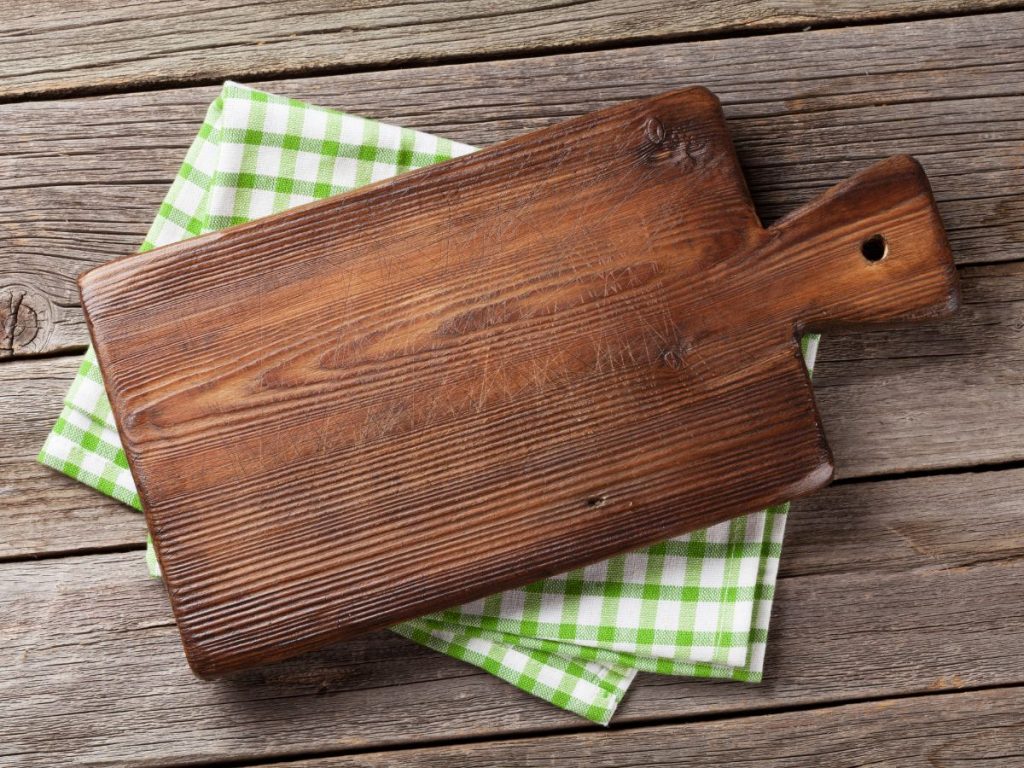
Finishing a Pine Cutting Board
Mineral oil method
An additional straightforward way of finishing a Pine chopping board involves applying three to five coats of mineral oil of food-grade quality once the board has been completed. The mineral oil will mitigate both the cutting board and the odor of the pine wood, which will also prevent the chopping board from drying out too rapidly.
Simply purchase a reasonably priced can of mineral oil suitable for meals from Amazon. Apply a generous amount of the mineral oil using a lint-free paper towel. The end grain ingests oil at an alarming rate. After that, let it lay and dry for six to eight hours, and once it’s dry, you may wipe away any oil on the surface. After that, depending on your requirements, you should repeat the process three to five times.
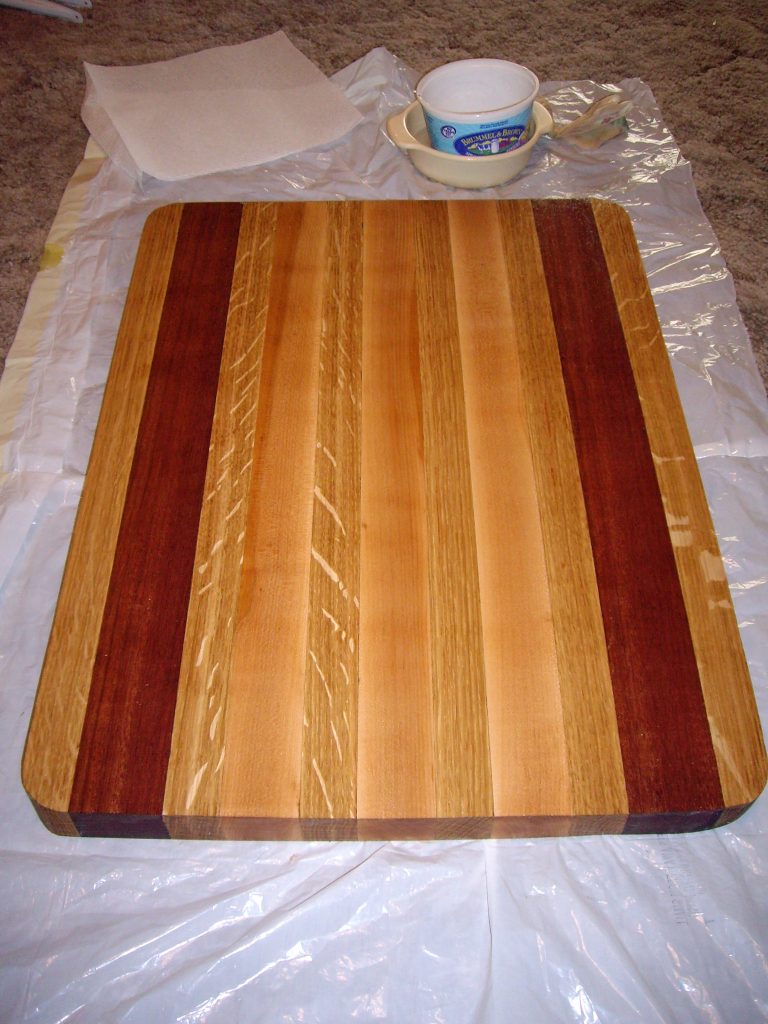
No finish method
It is not necessary for you to apply finishing to the cutting board that you have. After you have completed constructing and polishing the board, all that is left to do is clean it with soap and water and wait for it to dry, and then you can put it to use.
The main disadvantage of not treating the pine is that the scent of the sap naturally present in the hardwood is amplified, and part of that odor may be transferred to the meal.
The cutting board is completely risk-free, and I do not detect any discernible flavor differences in the meal prepared using the board. Therefore, leaving it undone is not a problem at all. However, with many items of washing and just ordinary wear and tear, the wood may get a little drier.
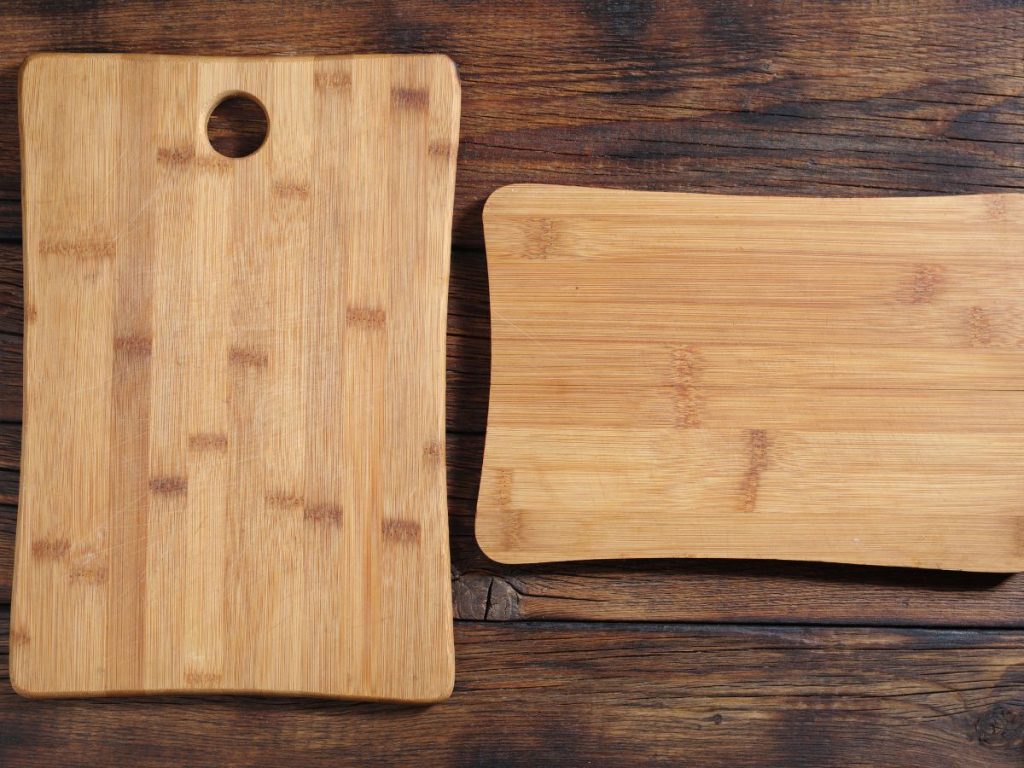
Hygiene of Pine Cutting Board
Wooden cutting boards, it is said, are more difficult to maintain than plastic cutting boards, and bacteria will flourish on the surface of wooden cutting boards. This is one of the claims made in the article.
In this case, the situation will be even direr for cutting boards made of pine because pine is such a plank of wood in comparison to other hardwoods that may be used for chopping boards, and a cutting board made of pine would have a lot of gaps and crevices where bacteria can grow.
This assertion, however, has not been validated by scientific research. Hence it cannot be considered a fact. According to some research findings, wood possesses antibacterial qualities, and the presence of wood on a cutting board will aid in keeping the board itself clean.
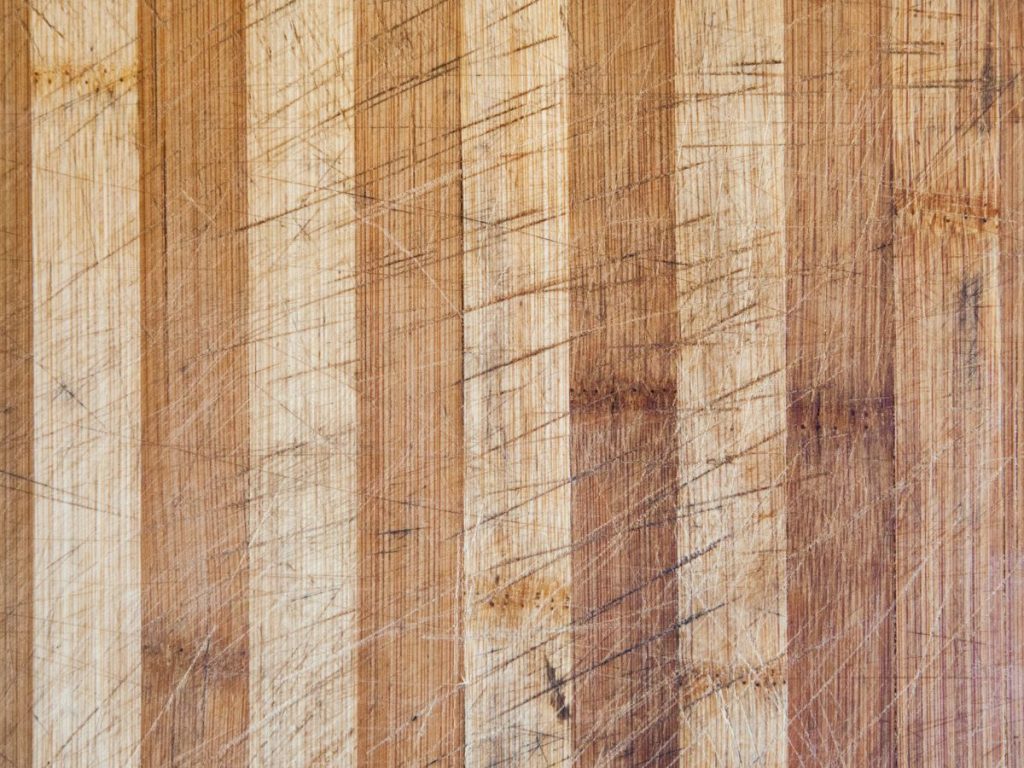
For a long time, the sanitation of hardwood chopping boards was a heated topic. Many eateries and so-called experts argue that wooden chopping boards for meats and other items that may carry hazardous bacteria should be avoided. You just need to follow a few easy procedures to keep your wood-cutting board in good condition:
Warm water and soap
After each use, you must first thoroughly clean it by washing it with soap and warm water. You can also disinfect it using a solution of vinegar or white vinegar that has been distilled. Then you should regularly lubricate it with oil, canola, or coconut, depending on your preference. Lastly, you need to put it somewhere dry and cool to store it.
Baking soda paste
Using a paste made of baking soda is yet another method for cleaning your pine cutting board. To apply the paste, combine baking soda and water in the same proportions to produce a paste, and then massage it into the board. After allowing it to sit for a few minutes, rinse it with warm water to remove any residue.

Sandpaper
If your pine chopping board shows signs of dryness or cracking, wash it down with fine grit sandpaper and then apply oil to it. If you have a cutting board made of pine, you should never use harsh chemicals and abrasives on it because doing so might destroy the wood. Following these straightforward instructions, you can ensure that your pine chopping board remains usable for many years.
Frequently Asked Questions
Can you use pine for cutting boards?
Pine is one form of wood that can be used for cutting boards; however, it is not the ideal type of wood to utilize for this purpose. Pine is a softwood, which means that it will be more susceptible to scrapes and damage in comparison to hardwoods such as oak and maple.
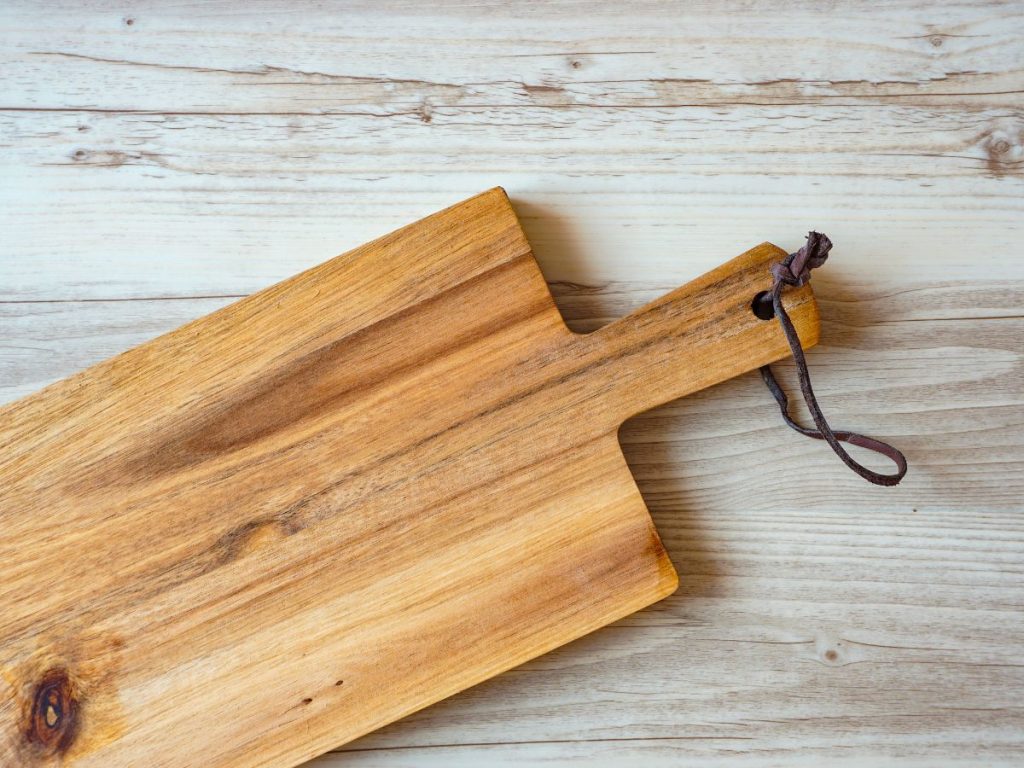
Can I use pine for the end grain board?
If you want to build a pine-cutting board, the end grain should be used for the cutting surface. This will reduce the amount of cutting marks left on the board and will also boost its strength.
Pine is an excellent and inexpensive option to use as wood for a chopping board, but its performance will be poorer when compared to that hardwood such as maple, walnut, or teak. Pine is a decent and cheap option to use as hardwood for a cutting board.
What can I use to seal the pine cutting board?
Pine, like most other types of wood, can have transparent finishes applied to it, such as varnish or polyurethane. Find the instructions on the can’s label, read them, and then apply the product as directed. To begin, though, apply a layer of clear shellac over any knots that are present in the wood. Doing so will prevent the pigments that are present in the knots from seeping into the finish.
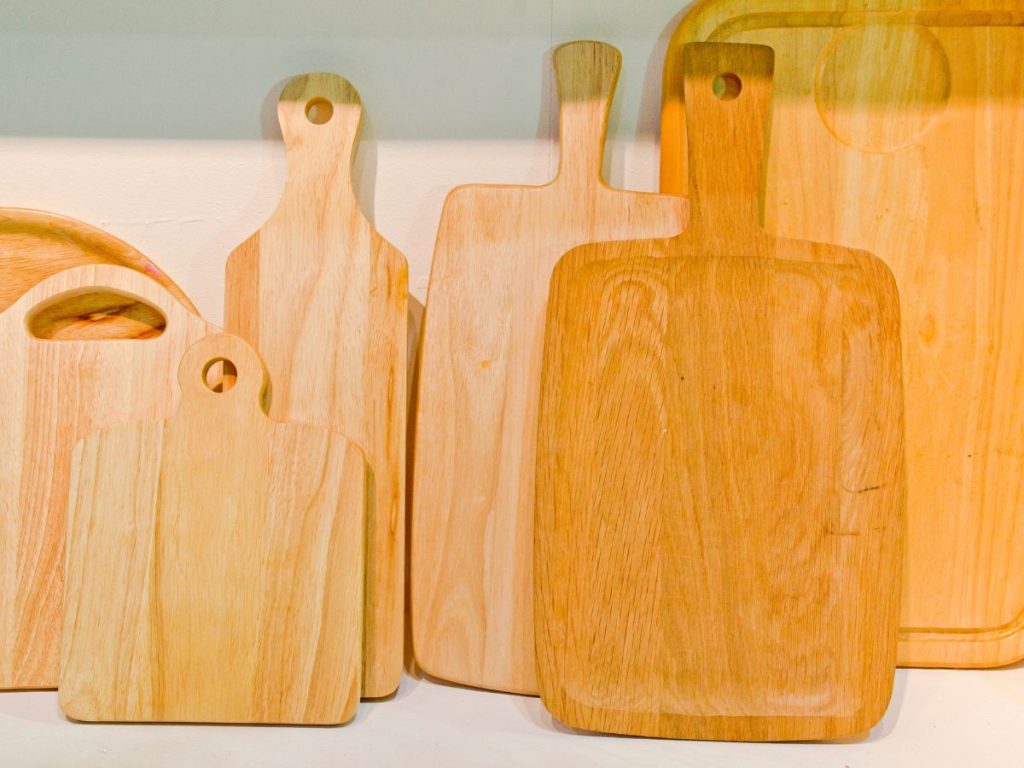
How to make pine food safe?
The procedure of applying a finish that is safe for food to unpainted wood tables and kitchenware is a straightforward one.
- Sand the object with sandpaper with a 320-grit grade until it is smooth
- When applying an oil finish, put a substantial amount on a cloth and rub it in
- Spread the wax over the surface with the cloth until it is completely covered
- Please give newly finished pieces sufficient time to dry and cure
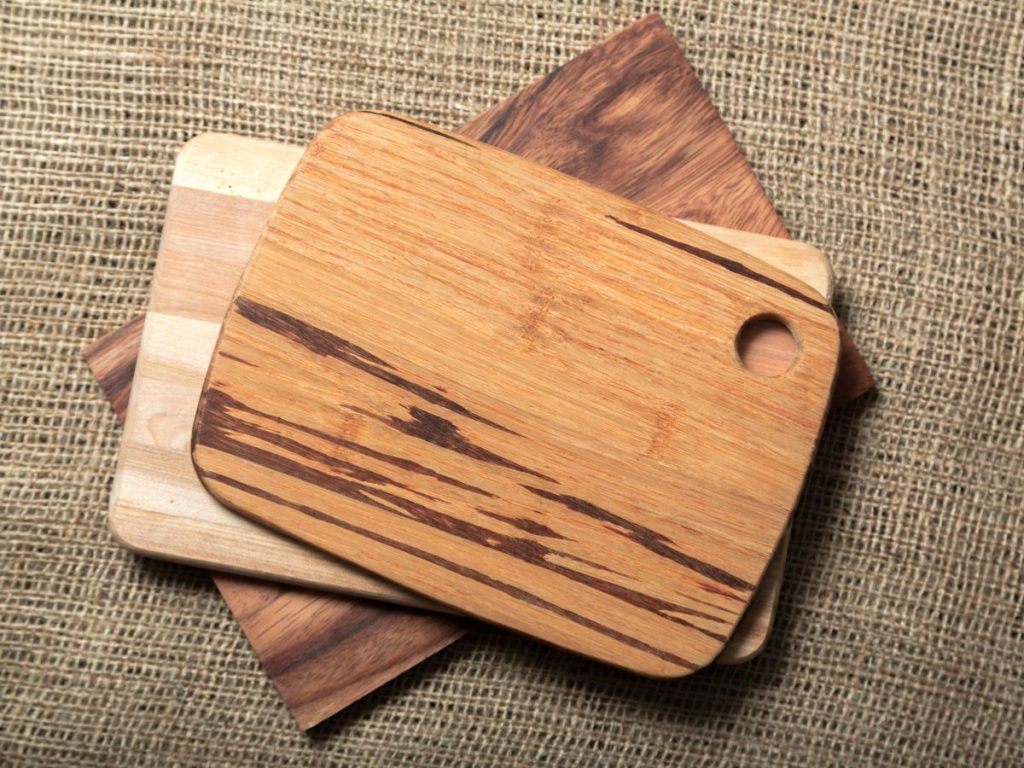
Conclusion
Can you use pine for cutting boards? The answer is yes. Pine is one sort of wood that can be used to make cutting boards, although it is not the ideal material to utilize. Pine is one of the softer forms of wood, meaning that it is more likely to scratch than other varieties. Pine is a softwood, which means that it will be more susceptible to nicks and scratches in comparison to hardwoods such as oak and maple.
Since pine is more porous than other kinds of wood, it will have to be properly sealed in order to avoid warping and splitting from occurring. Now you are in a better position to assess whether or not pine is the kind of wood you need for your next task now that you have more information about it.
